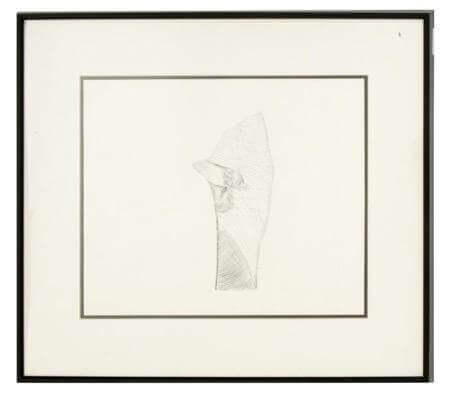Francesco Clemente
Francesco Clemente was born on March 23, 1952, in Naples, Italy, a city renowned for its rich cultural heritage. In 1970, he enrolled in the Faculty of Architecture at Sapienza University of Rome, although he did not complete his degree. During his time in Rome, Clemente was exposed to a vibrant contemporary art scene, meeting influential artists like Luigi Ontani, Alighiero Boetti, and Cy Twombly. Boetti, in particular, became a close friend and mentor, and their relationship greatly influenced Clemente’s early work.
In 1973, Clemente made his first visit to India, a country that would profoundly impact his artistic development. He established a studio in Madras (now Chennai) and immersed himself in the religious, folk, and traditional artistic practices of the region. Between 1976 and 1977, he studied religious texts at the library of the Theosophical Society of Madras, further enriching his understanding of Indian culture and spirituality.
Clemente’s early work often involved ink drawings and collages that reflected dreams and childhood memories. His first solo exhibition took place in 1971 at the Galleria Giulia in Rome, where he showcased these pieces.
In the 1980s, Clemente became a prominent figure in the Italian Transavanguardia movement. This movement marked a departure from Formalism and conceptual art, focusing instead on figurative art and Symbolism. Clemente’s works from this period are characterized by their rich symbolism and intricate details.
In 1982, Clemente relocated to New York City, establishing himself in Greenwich Village. The move allowed him to engage with the American art scene and expand his artistic horizons.
Clemente’s work has been exhibited extensively around the world. His early large canvases, painted between 1981 and 1982, were displayed in a solo exhibition at the Whitechapel Gallery in London in 1983, followed by shows in Germany and Sweden. A traveling exhibition of his work was organized by the John and Mable Ringling Museum of Art in Sarasota, Florida, in 1986.
He participated in numerous prestigious art events, including the Venice Biennale (1988, 1993, 1995, 1997), documenta in Kassel, Germany (1992, 1997), and the Whitney Biennial (1997). His solo exhibitions include shows at the Philadelphia Museum of Art (1990), the Royal Academy of Arts in London (1991), the Sezon Museum of Modern Art in Tokyo (1994), and the Solomon R. Guggenheim Museum in New York (2000).
Clemente continued to be a prolific artist well into the 21st century. His later solo exhibitions included shows at the Museo Archeologico Nazionale di Napoli in Naples (2002–2003), the Irish Museum of Modern Art in Dublin (2004), Palazzo Sant’Elia in Palermo, Sicily (2013), and the NSU Art Museum in Fort Lauderdale, Florida (2017).
In 1998, his artwork was featured in the film “Great Expectations,” directed by Alfonso Cuarón, bringing his unique visual style to a broader audience.
Beyond his visual art, Clemente co-published Hanuman Books from 1986 to 1993. This publishing venture further showcased his deep engagement with the broader cultural landscape.
Francesco Clemente’s multifaceted career spans several decades and continents, embodying a rich tapestry of cultural influences and artistic exploration. His contributions to the Italian Transavanguardia movement, his collaborations with Indian artists, and his extensive exhibitions worldwide have cemented his legacy as a significant contemporary artist.
Whether through his evocative paintings, intricate drawings, or thoughtful publications, Clemente continues to inspire and captivate audiences globally, making him a towering figure in the world of modern art.
Fragment, 1981
